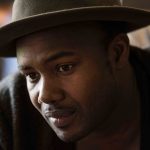King Tubby the dub master lives on
On the 31st anniversary of King Tubby’s death, Percy Zvomuya explores how the sonic experiments he pioneered in Jamaica in the 1970s still define modern dance music.
Author:
6 February 2020

When American music scholar Michael E Veal was working on what later became the book Dub: Soundscapes & Shattered Songs in Jamaican Reggae, he made a number of visits to Jamaica, part pilgrimages and part research trips.
On his second visit to 18 Dromilly Avenue in the Waterhouse ghetto of Kingston, Jamaica, at what had been King Tubby’s home and studio, he saw a schoolboy whose family then lived on the property. As Veal raised his camera to take a photograph of the carved door at the entrance of the studio, the boy asked, “You a tourist?” When the scholar replied that he was writing a book about King Tubby, the boy simply said, “He died.”
The boy was right. Well, kind of.
King Tubby, born Osbourne Ruddock in 1941, was shot and killed in his driveway on 6 February 1989 by a robber who took away his licensed firearm. The brutal act cut short the life of one of the 20th century’s great musical innovators, a man who started off repairing the amplifiers of Kingston’s sound systems but ended up – singly and sometimes in partnership with other engineers and producers, such as Sylvan Morris, Lee “Scratch” Perry, Errol Thompson, Edward “Bunny” Lee and Augustus Pablo – developing the genre known as dub.
The development of dub
To be sure, Tubbs (as his friends called him) wasn’t the inventor of dub, for around 1968, instrumentals were already a feature at dances. Like most revolutionary developments, the idea of the instrumental came about through an oversight. The sound system man Rudolph “Reddy” Redwood went to cut a dubplate of the Paragons’ song On the Beach at Duke Reid’s Treasure Isle studios, but forgot to add the voices. (A dubplate, sometimes called an acetate, is a one-off recording often used as a test pressing, to be played a limited number of times before it decomposes). However, when Redwood played it later at a weekend dance, the revellers loved it, singing along to the “missing” lyrics.
Bunny Lee happened to be at the dance and when he saw King Tubby on the following Monday, he told him, “Tubbs, boy, that little mistake we made, the people, them love it!” The engineer immediately caught on to the craze, but started making subtle changes to the soundscapes he was conjuring in his home studio at 18 Dromilly. The song would start off “normally” with the voices and horns and guitar accentuated, but then Tubby would drop out the voices, the horns and the other instruments, and bring in the drum and the bass.
Related article:
Lee played a key role in these innovations. A producer at Dynamic Studio off Spanish Town Road in Kingston, he brokered a deal between the studio and King Tubby. When Dynamic Studio wanted to sell off its unwanted two-track mixing console, Bunny Lee facilitated its sale to King Tubby. Using his knowledge of the inner workings of amplifiers, he customised it to produce echo, delay and reverb effects and to more fully utilise the high-pass filter.
B-side instrumentals were not titled or credited with the engineer’s name until 1974, when King Tubby was credited on the B-side of Larry Marshall’s 1974 song I Admire You. King Tubby’s version was called Watergate Rock – this was during United States president Richard Nixon’s troubled tenure in office. This started a trend of ever-inventive dub song titles, according to British reggae deejay Ian Causer. In 1976, the record King Tubby Meets Rockers Uptown appeared, by King Tubby and the producer Augustus Pablo, who plays the melodica, a keyboard that works by blowing air through a mouthpiece. This album, on which the Eastern mysticism Pablo conjures on his melodica is laid over King Tubby’s mixing, is considered by many to be the greatest dub album of all time. Then there was Negrea Love Dub, by Linval Thompson, an album that was endlessly played at my high school on Saturday nights in the early 1990s as older students, high on cane spirits, cheap brandies and marijuana whirled on the dance floor.
This naming of what had before been simply called a “version” wasn’t just the engineers boasting. After a recording had passed through the hands of the mixing desk, the song was broken down into its individual sonic units and then put together again. The engineer’s role as a “techno-deconstructionist” often resulted in a brand-new song. This phenomenon, which Veal calls the “postsong”, is like the “ghost” of a song. In popular culture, this is sometimes known as a remix. It was pioneered in Jamaica. The significance of this was pounced on by scholar Louis Chude-Sokei who wrote, “It is clear that Jamaica has become a mythic homeland for techniques of technology and culture. This can not be stressed enough: a black third-world country is being celebrated for its technological innovations.”
Transcending traditional roles
What Tubby and other engineers did was nothing short of phenomenal, for they managed to transcend the traditional role of the engineer. Before 1950, Veal writes, the engineer’s role had been conceived as a “purely technical one, concerned mainly with the ostensibly ‘accurate’ translation of musical performances onto a recorded format”. But when the mixing desk was placed in the hands of Jamaican engineers, they moved into the “realm of the creative”.
King Tubby rewrote the rules, bringing the engineer out from behind the console and placing him in front of it, Bunny Lee told British reggae deejay David Rodigan in a 2013 radio documentary by the British Broadcasting Corporation. In the book Reggae: The Story of Jamaican Music, reggae historian Lloyd Bradley makes the same point when he highlights “the studio [as] an instrument in its own right” and whoever is “operating the mixing desk as the most important player”. These innovations, which had the effect of changing the course of modern dance music – hip-hop, techno, jungle, house, neo-dub, dub step – happened in Jamaica from 1968 to the early 1980s, when dub fell out of fashion.
It’s no surprise that some of those at the vanguard of this movement carry idiosyncratic names. Born Overton Brown, Scientist got his moniker from King Tubby when the older man recognised his protégé’s natural facility with electronics, studio instruments and techniques. Mad Professor, born Neil Fraser, opened up the family radio to find out where the voice was coming from and at age 10, while fiddling with diodes and transistors, built a radio without the help of books.
Related article:
The innovations that happened during this period wouldn’t have been possible if it were not for sound systems. The phenomenon of the sound system started in Jamaica where, after the war, a lot of people could not afford to buy records. Listening and enjoying music became a communal affair in halls, community centres or out in the open, where speakers were strung up in a tree.
Among the biggest sound systems were Sir Clement “Coxsone” Dodd’s Downbeat, Duke Reid’s Trojan and King Tubby’s Hometown Hi-Fi. These sound systems wanted exclusive tracks they could play at the fiercely competitive “sound clashes”, an event at which two or more sound systems tried to outshine each other by playing rare grooves, thus earning the bragging rights of being the champion sound.
Morris, an engineer, told Veal, “This is how come the real dub ting started … the sound men, they were trying to compete with each other. So sometimes they come in and say, ‘Bwoi, you have any good riddim?’ And there’s something that you like and you might give them a track.
“When you gave a man a riddim track, you give it to him in a certain style [that is, mix]. Him go away and him play it against another sound [system], ’cause them have a clash. And because of certain tunes that you gave him, he won the contest. The next morning he come back and him want the same music, but he no want it the same way! So you have to be innovative with these two tracks. I try to feed some likkle things, take out a thing here, and put in a thing there.”
Naturally, they couldn’t sell the same tune to two competing sound systems and had to mix the dub plates differently so that each sound system could claim an exclusive. “That’s why the dub plate start to become exclusive and very expensive.” The acetate could become expensive because the need for an exclusive was taken to a new extreme, virtually unheard of, even today.
Related article:
At some point in dub’s sonic trajectory, it wasn’t enough to have just a dub version of a song. The sound systems would go to a specific artist, say Dennis Brown, and ask him (for a fee, of course) to redo a song already in his discography but in which he changes the lyrics and sings in praise of a particular sound system. Singer Mikey Dread told Veal, “He [the sound system man] want Dennis to say his sound is the number one sound or champion sound, because he gonna play a competition. The other guys don’t have Dennis singing on it, they only have the regular generic one.” Naturally, the song on which Brown has vocals in praise of a certain sound is going to be popular with the listeners who already know a version of the song.
Conjoined to these experimentations was the increasing prominence of the deejay, whose role at dances was to “toast” or do raps over the tune. It’s no surprise, again, that U Roy (born Eward Beckford) became a force while working with King Tubby and is acknowledged, in the words of fellow deejay Dennis Alcapone, as the “originator of all modern deejay style”. U Roy’s catchphrases from his heyday 1970s – when the line “this station rules the nation” was first chanted at dances – are still popular today.
New listeners
Even though dub fell out of fashion in the 1980s, a new generation of listeners in England started taking an active interest in the innovations the genre heralded. “When I first heard stuff like Tubby’s mixes, they just sounded like no other music that I’d ever come across. It was pretty radical electronic music,” British photographer and reggae historian Dave Hendley told Veal.
Hendley is just one of those from beyond the Jamaican community in Britain who was attracted by the sound. People who were listening to punk and punk musicians were drawn to dub because its status as the “other” matched punk’s marginal status. It wasn’t just dub’s status they found appealing, they also loved “its rough-hewn” sonic textures.
Beyond punk, other listeners were drawing from the well of dub, most notably jungle and trip-hop. The two genres, Veal says, “illustrate the way that the parallel impulses of dub (drum’n’bass mixing and atmospheric soundscaping) and hip-hop (excerpted breakbeats and samples) merged in the 1980s and 1990s to help transform the grammar of global popular dance music.”
King Tubby’s protégé King Jammy, a producer in his own right, told Bradley, “I couldn’t say if he [King Tubby] invented dub or not, but surely he was the dub master, he was the best of all time. I would say he was genius, a self-taught genius.”
Whether King Tubby invented dub or not, there is no doubt that the innovations he, more than anyone, pioneered at 18 Dromilly have a lingering influence on dance music today. So in many ways, to contradict that schoolboy in Kingston, King Tubby is not dead. His sonic lives on.



